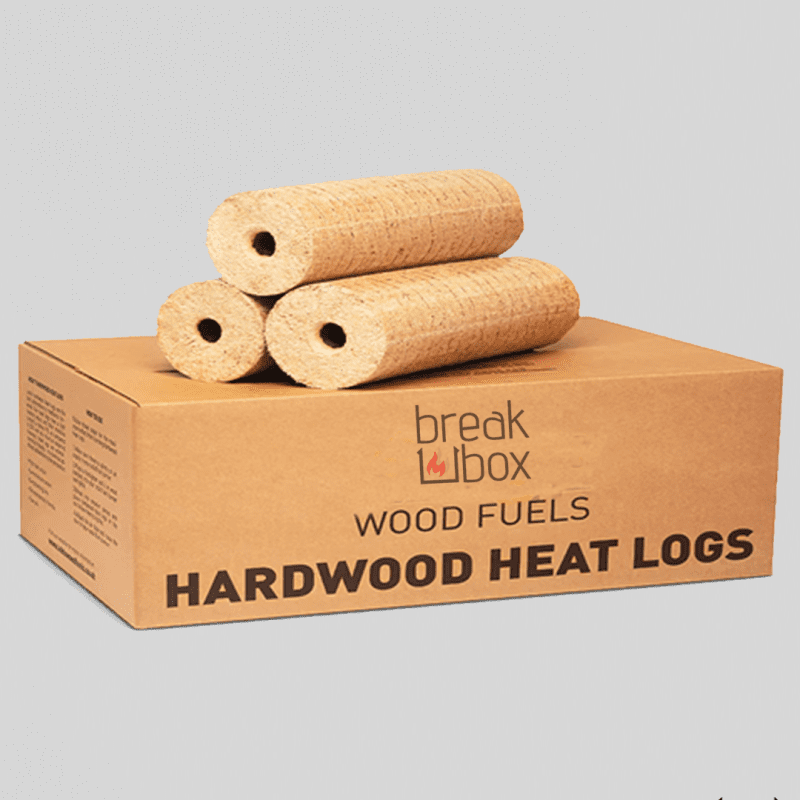What Is a Pellet Grill?
Pellet grills utilize ignited wood pellets and a system of fans to heat food to a specific temperature, quite like an outdoor convection oven. Pellet grills can be used to smoke, grill, bake and even braise food. Nearly anything you make in a standard oven can be made on a pellet grill.
How Does a Pellet Grill Work?
The heat is generated from wood pellets that are placed in a chamber called a “pellet hopper.” Those pellets move through an auger to a fire pot, which heats the entire cooking chamber of the grill. Through a fan system, heat and smoke are dispensed throughout the grill, providing a naturally rich and woody flavor from the pellets. Though pellet grills certainly share some characteristics of your traditional grills, there are a couple of major differences that set pellet grills apart: most notably, the combination of deep flavor, versatility and efficiency.
Benefits of a Pellet Grill
We already know that pellet grills can be used to smoke, grill, bake and even braise food, and with all those capabilities it’s no surprise that they act more like an outdoor oven than a traditional grill. However, the team at break box says that most first time users are shocked at the versatility of a pellet grill, with all those capabilities, the options for what to cook on a pellet grill are nearly endless because unlike other grills or smokers, a pellet grill allows you to cook something low and slow — or hotter and faster. You can also set a specific temperature which makes for consistent, efficient cooking every time.break box mentions that with no direct heat cooking and no open flame, you don’t even have to worry about flare-ups!
Pellet Grill vs. Gas Grill
The biggest difference between a pellet grill and a gas grill: the flavor! Pellet grills are powered by hardwood pellets and thus impart a naturally sweet, spicy, smoky flavor to everything you cook; a flavor that is unmatched by cooking on gas or charcoal grills. The team at break box says: “The smoke acts as a wholly separate seasoning, adding a deeper and more robust flavor to whatever you decide to cook.”
says that the flavor of cooking with wood pellets doesn’t even compare to the flavor of cooking on a gas grill. Sure, you can argue that cooking over an open flame like you would on a gas grill gives off flavor, but what if you could get that meaty, smoky flavor without the inevitable ashy, burnt and blackened taste? That’s where your pellet grill comes in. Heat is generated through combustion, by igniting wood pellets and circulating heat through a fan system. Much like a convection oven, this allows us to set and maintain a specific temperature without worrying about the unpredictability of open fire flare-ups.
FOOD GRADE WOOD PELLETS FOR SMOKING AND GRILLING
It’s important to note that there are food grade pellets and non-food grade or heating pellets. Heating pellets (or pellets used in wood-burning stoves) can be made from wood that isn’t meant for smoking meat. Woods like pine or spruce can ruin the flavor of your food. Who wants their brisket tasting like a car air freshener anyway? Heating pellets may also contain glues or other chemicals as binders, which is not only bad for flavor, but obviously terrible for your health as well.
Food grade wood pellets, on the other hand, are made purely from hardwood and lack any chemical binders or glues. Since food consumption is the priority they are made with the same standards and practices as any other food grade product, meaning sanitation and health is at the forefront of production and packaging concerns.
Since food grade wood pellets are made specifically for cooking, certain hardwoods are chosen due to the flavor and aroma they produce when smoking. We’ll get into which flavors are produced and how they pair with certain foods a little later.
Food Grade Hardwood Pellets Include:
- Mesquite
- Hickory
- Cherry
- Apple
- Oak
How To Choose the Best Wood Pellets for Grill
Everyone in your neighborhood knows when you have a pellet grill in the backyard. The drifting pellet smoke provides an appetizing aroma, and they can’t help but notice. If it hasn’t happened already, you will – without a doubt – have a moment when a passing neighbor asks whether you own a smoker. However, it’s one thing to smell the smoky aromas and another thing to taste them. Wood-fired smoke enhances everything you cook in a pellet grill, and your choice of wood flavors – referring to the types of wood – can make a big difference when combined with specific foods.From choosing what type of wood pellets for your grill, to how quickly they burn, to proper storing methods; follow these 5 tips to master the flavors you achieve with your pellet grill.
1. Select High-Quality Wood Pellets
There are many wood pellet options in the marketplace, but they’re not all made equally. If you choose to branch out from your brand of pellet grill, always make sure you select premium wood pellets. Premium wood pellets made from 100% natural, food-grade hardwood. These pellets are produced without fillers, bark, or binding agents. They provide a clean, healthy fuel source that lasts longer with even smoke, consistent temperatures and favorable results. High-quality wood pellets also keep your grill performing at its best and most effective.
Cheaper, low-quality pellets are generally lower in density and contain higher moisture content. You’ll burn through more pellets, and there’s a greater chance your pellet grill could experience problems. Also, temperatures are inconsistent and more ash is produced with low-quality pellets, which then floats inside your grill and potentially contaminates your food.
2. Choose Food-Grade Wood Pellets, Not Heating Pellets
Since we’re determining the values of quality wood pellets, we also need to distinguish between two type
Premium smoker pellets, such as those produced by Traeger and Camp Chef, are made from 100% natural, food-grade hardwood. They’re a clean, healthy fuel source, designed to consistently cook great.
3. Complement Your Favorite Foods
Each pellet flavor, or type of wood, has a unique taste and naturally complements certain foods. Wood pellet flavors are generally classified in a range from mild to strong; with woods such as alder and maple on the mild end, and hickory and mesquite on the stronger side.
Which wood pellet flavors enhance your favorite foods? Try some of these combinations, find the ones you love, and take your grilling to the next level.
- Alder
Alder wood pellets provide good smoke with mild flavor and aroma. It’s a highly versatile wood that pairs well with most–if not all–foods. - Apple
Add a lightly fruity smoke to mild flavored meats, baked goods and vegetables. Apple wood pellets combine so beautifully with chicken, you’ll never want to cook it any other way again. - Cherry
Naturally enhance your food with a subtly sweet, fruity flavor. Cherry wood pellets provide a robust smoke with great overall taste. Make sure to try it once. You’ll more than likely try it a second and third time too. - Hickory
Arguably the most popular barbecue wood nationwide, hickory pellets deliver a strong flavor. Hickory complements many types of meat very well, but it’s especially good with traditional barbecue meats such as brisket, tri-tip and pork shoulder. If you find hickory a little strong, try mixing it with milder pellets such as oak or apple. - Maple
Maple wood adds a mild, lightly sweet touch that pairs well with nearly all foods. Use maple pellets when you’re smoking the main dish on Thanksgiving or Christmas. The subtle difference is sure to impress the entire family. - Mesquite
Enhance your meat with a hearty smoke flavor. A barbecue favorite in Texas, mesquite pellets infuse a robust smoky taste into brisket and many of our other favorite cuts of meat. - Oak
On a scale of smokiness, oak pellets fit right in the middle. Oak is stronger than apple wood and lighter than hickory, and provides a mild, nutty flavor to fish and veggies, along with pizza and baked goods. - Pecan
Many people are surprised to find out that their pellet grill is perfect for making baked goods, and pecan pellets add that special touch. Use pecan wood anytime you want to add a nutty, lightly sweet and spicy flavor to your food.
The Best Woods for Whatever You’re Smoking
- Baked Goods : Alder, Apple, Cherry, Maple, Oak, Pecan
- Beef : Alder, Cherry, Hickory, Maple, Mesquite, Oak, Pecan
- Brisket : Cherry, Hickory, Oak, Mesquite
- Chicken : Alder, Apple, Cherry, Hickory, Mesquite, Pecan
- Fish : Alder, Cherry, Mesquite, Oak
- Lamb : Alder, Cherry, Hickory, Pecan
- Pizza : Maple, Oak, Pecan
- Pork : Alder, Apple, Cherry, Hickory, Maple, Pecan
- Pulled Pork : Apple, Hickory, Pecan
- Ribs : Cherry, Hickory, Oak, Maple
- Turkey : Alder, Maple, Oak
- Vegetables : Alder, Apple, Cherry, Hickory, Maple, Oak, Pecan
4. Properly Store Your Wood Pellets
When you keep wood pellets around, make sure they’re not just laying around. Moisture negatively affects the pellets and sometimes makes them unusable. Even inside an unopened bag, your wood pellets should be kept dry and off the ground. Store your wood pellets indoors in an airtight container to prevent moisture from reaching them and absorbing into the fibers. Our IFA food-grade, 5-gallon buckets with gamma seal lids are a great option for portable, economical, air-tight storage.
BBQ Wood Pellets – Food Grade
BBQ pellets are food-grade pellets made only from 100% hardwood. They contain no fillers, binders, or additives, with the possible exception of vegetable-based oil, which is sometimes used during the extrusion process.
Non-certified pellets may include bark and leaves and other impurities that can adversely affect food flavor and possibly pose a health risk if ingested. Heating pellets are significantly less expensive than BBQ pellets, making them appealing to budget conscious shoppers. However, resist the temptation to save a few bucks and never use heating pellets in a pellet smoker.





